The trio of pioneering female artists who took on minimalism in the 1960s and 70s
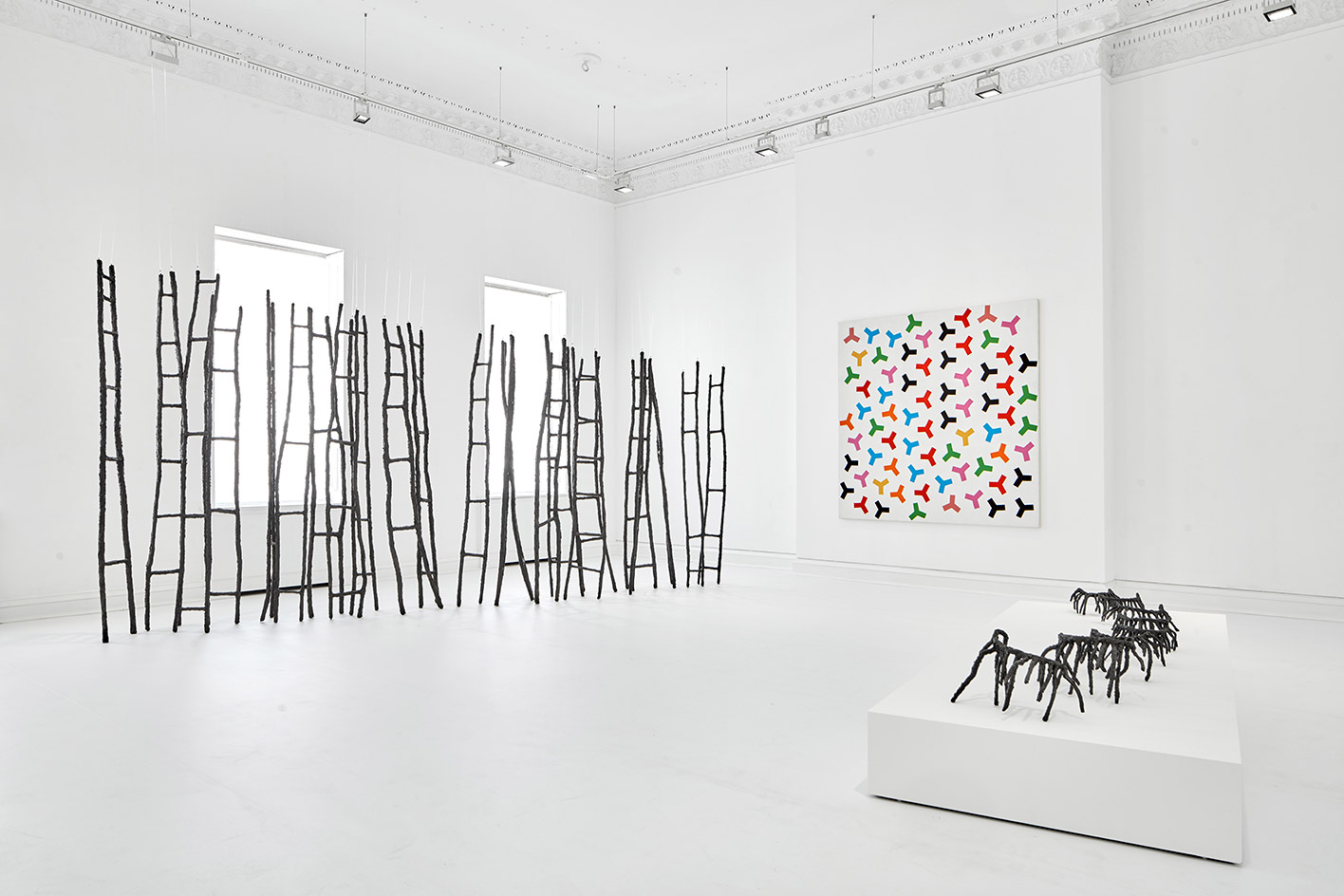
An exhibition opened at London’s Galerie Thaddaeus Ropac celebrates three pioneering female artists of the minimal and post-minimal movements. Wanda Czelkowska, Lydia Okumura and Rosemarie Castoro each subverted the avant-garde tendencies of the 1960s and 1970s in their own right, offering fresh and radical and perspectives on sculpture and painting in a male-dominated landscape.
The 18th-century, Grade I listed Ely House on Dover Street is an apt location: as a former private members’ club, it was one of the first to allow women to grace its doors in 1909. The exhibition concept stemmed from a conversation in 2016 between gallery owner Ropac and curator Anke Kempkes when it transpired that each artist was on the cusp of landing a major retrospective. It highlights the different experiences between female artists and their male counterparts during the 60s and 70s. ‘The men had people telling them to keeping doing what they were doing, women like this didn’t,’ Kempkes remarks.
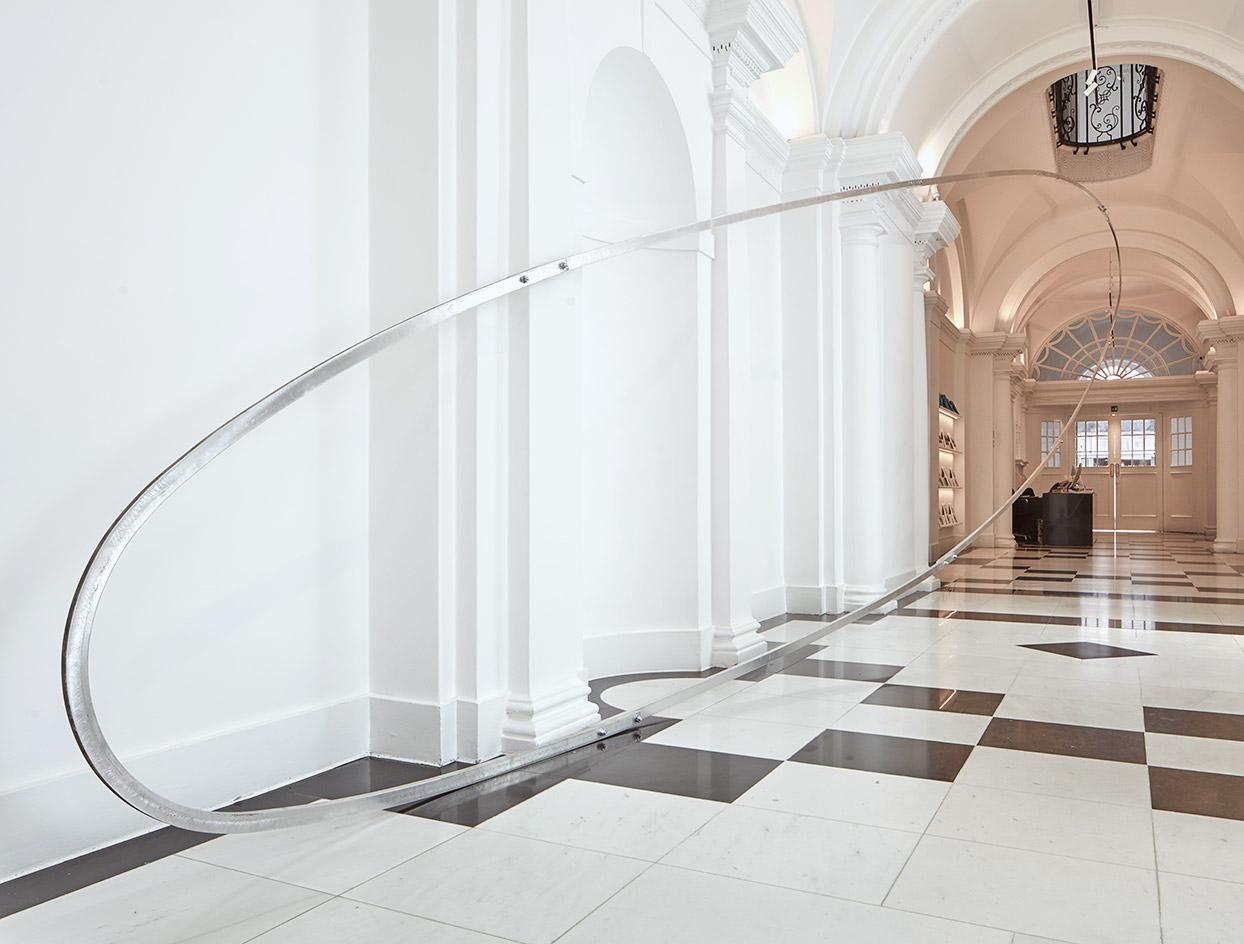
Installation view of Wanda Czelkowska’s work at Galerie Thaddaeus Ropac, London
When Wanda Czelkowska began her career, she was resistant to the rigid and restive mood of her native Poland, then under the shadow of communism. Tensions eased in the late 50s following Stalin’s death and she began a series of ‘awkward’ and whimsical structures as a parody of the political system. Czelkowska focused ‘obsessively’ on her signature ‘head motif’— three are displayed here – influenced by Etruscan and Minoan cultures.
‘When we asked whether she thought these heads were male or female, she wisely said they were a “third gender”’, Kempkes recalls. The drastic evolution of Czelkowska’s five-decade career will be laid bare, morphing through neo-primitivism, 60s abstraction to the introduction of stark-edged brutalist deconstructions. The artist still lives and works alone from her factory studio in Mokotów, the ‘hipster’ district of Warsaw, alongside her entire legacy of work.
Lydia Okumura’s immersive wired installation using intelligent optical colour fields was first realised in 1984, and is displayed here in an altered format. ‘I don’t think it matters that it’s not the same as it was,’ Okumura told us while preparing her colossal reel of wired mesh for her sculpture. The São Paulo-born Japanese artist draws inspiration from a number of sources such as land art and the anti-establishment wave of Arte Povera. ‘It’s astonishing that she does all of this in her head’, admires Kempkes of Okumura’s analytical and rigidly mathematical work.
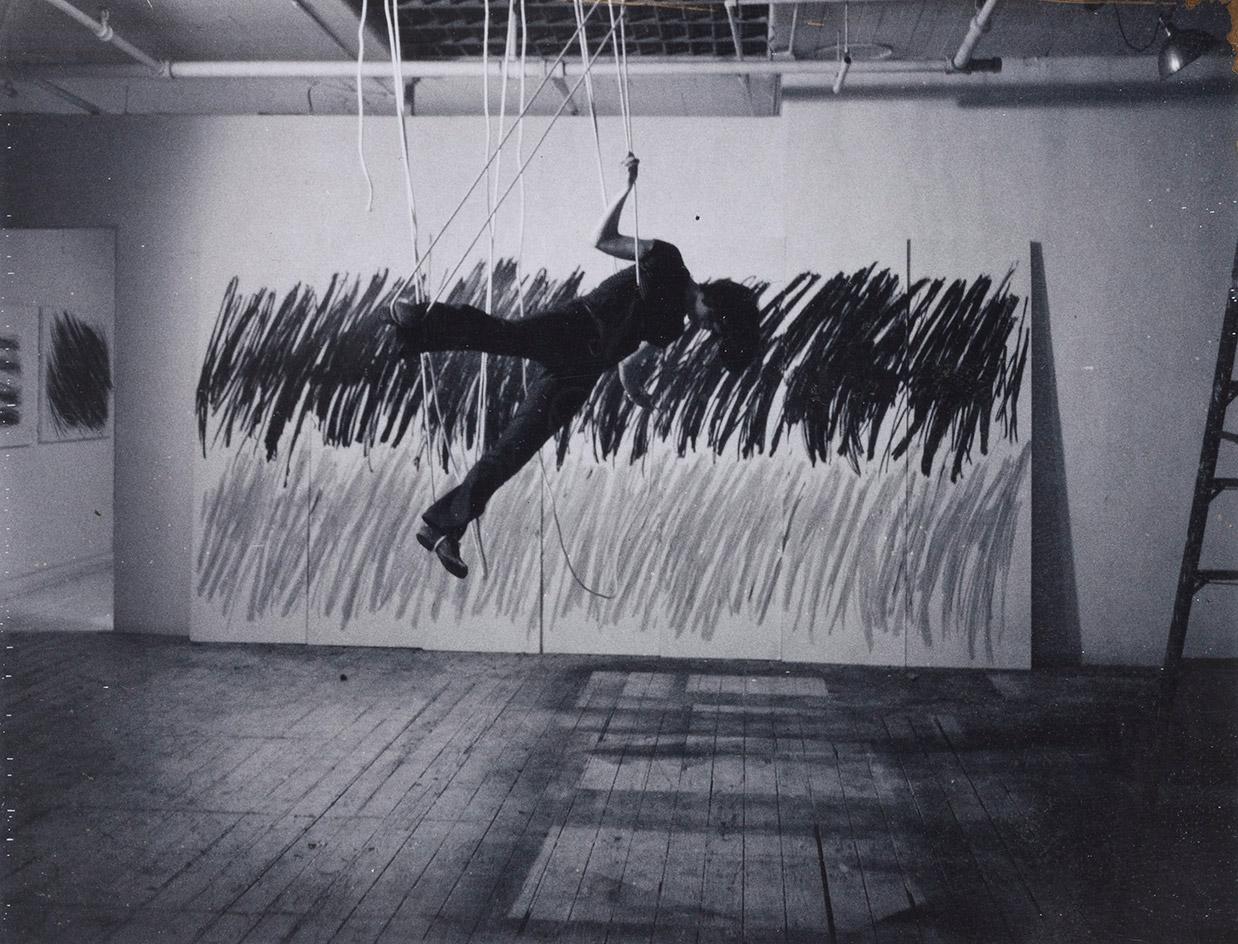
Rosemarie Castoro performing in her Soho studio, New York, in the 1970s.
Rosemarie Castoro was at the core of New York’s 1960s minimalist wave, sharing a Soho apartment with her then husband and famed ‘grid’ sculptor, Carl Andre. She initially pursued a career in dance, but, according to Kempkes ‘stopped because she disliked the lack of creative freedom’. But even after Castoro entered realm of hard-edge minimalist abstraction, movement and dancers’ treatment of space remained key forces in her work.
Here, her work occupies the entire first floor of the gallery, including a series of primitive epoxy ‘DNA ladders’ titled Land of Lads, and a parade of eerily oversized eyelash ‘creatures’, moulded in the same material, titled Land of Lashes. The latter’s horizontal forms, contrasted with the former’s verticality, can be read as a commentary on the stagnation of women artists’ careers. Yet, with their expressive forms and monumental presence, the lashes appear to be marching on, just as the arc of art history finally begins to bend towards equality.
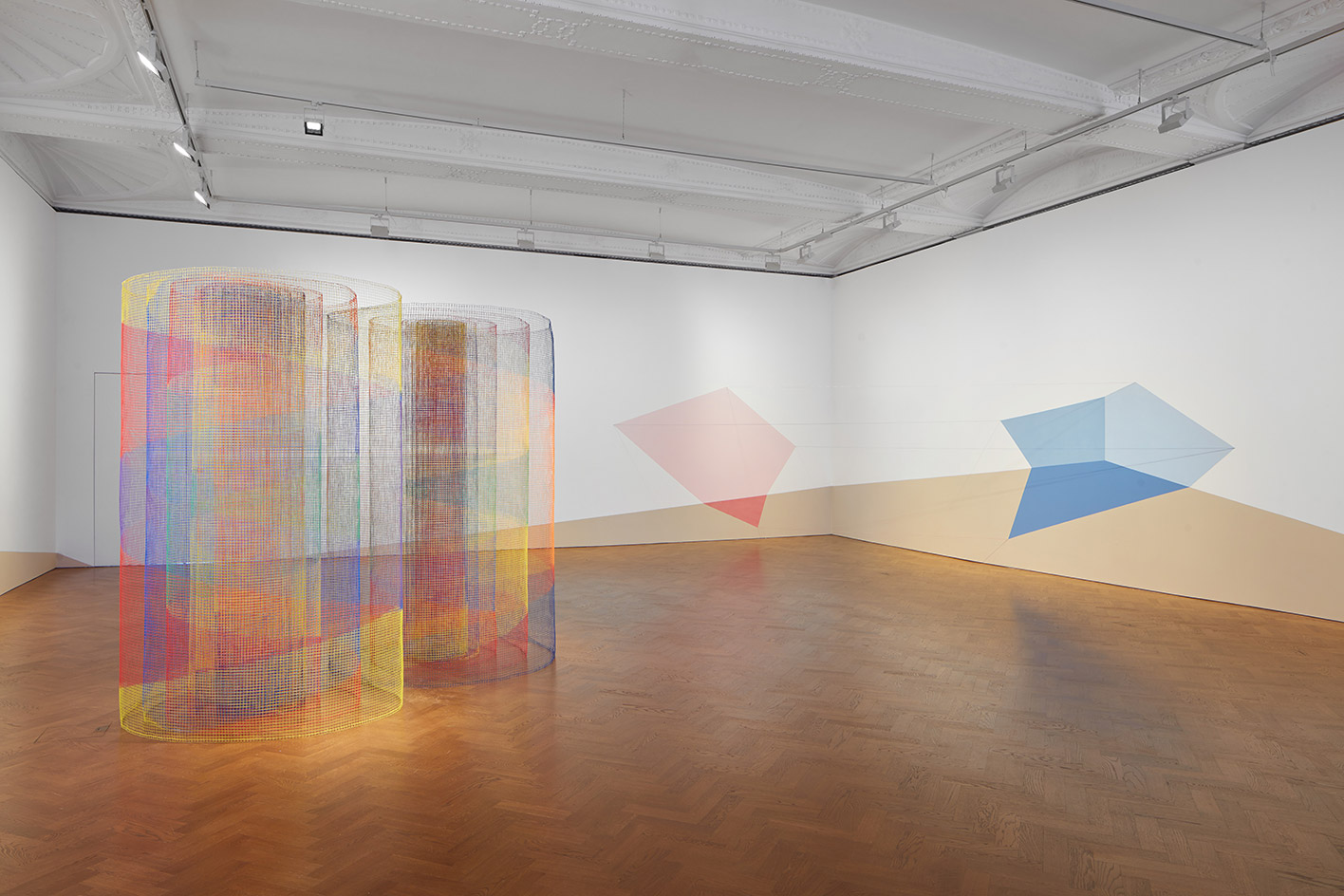
Installation view of Lydia Okumura Land’s works at Galerie Thaddaeus Ropac, London
Information
‘Land of Lads, Land of Lashes’ is on view until 11 August. For more information, visit the Galerie Thaddaeus Ropac website
Address
Galerie Thaddaeus Ropac
Ely House
37 Dover Street
London W1S 4NJ
Wallpaper* Newsletter
Receive our daily digest of inspiration, escapism and design stories from around the world direct to your inbox.
Harriet Lloyd-Smith was the Arts Editor of Wallpaper*, responsible for the art pages across digital and print, including profiles, exhibition reviews, and contemporary art collaborations. She started at Wallpaper* in 2017 and has written for leading contemporary art publications, auction houses and arts charities, and lectured on review writing and art journalism. When she’s not writing about art, she’s making her own.
-
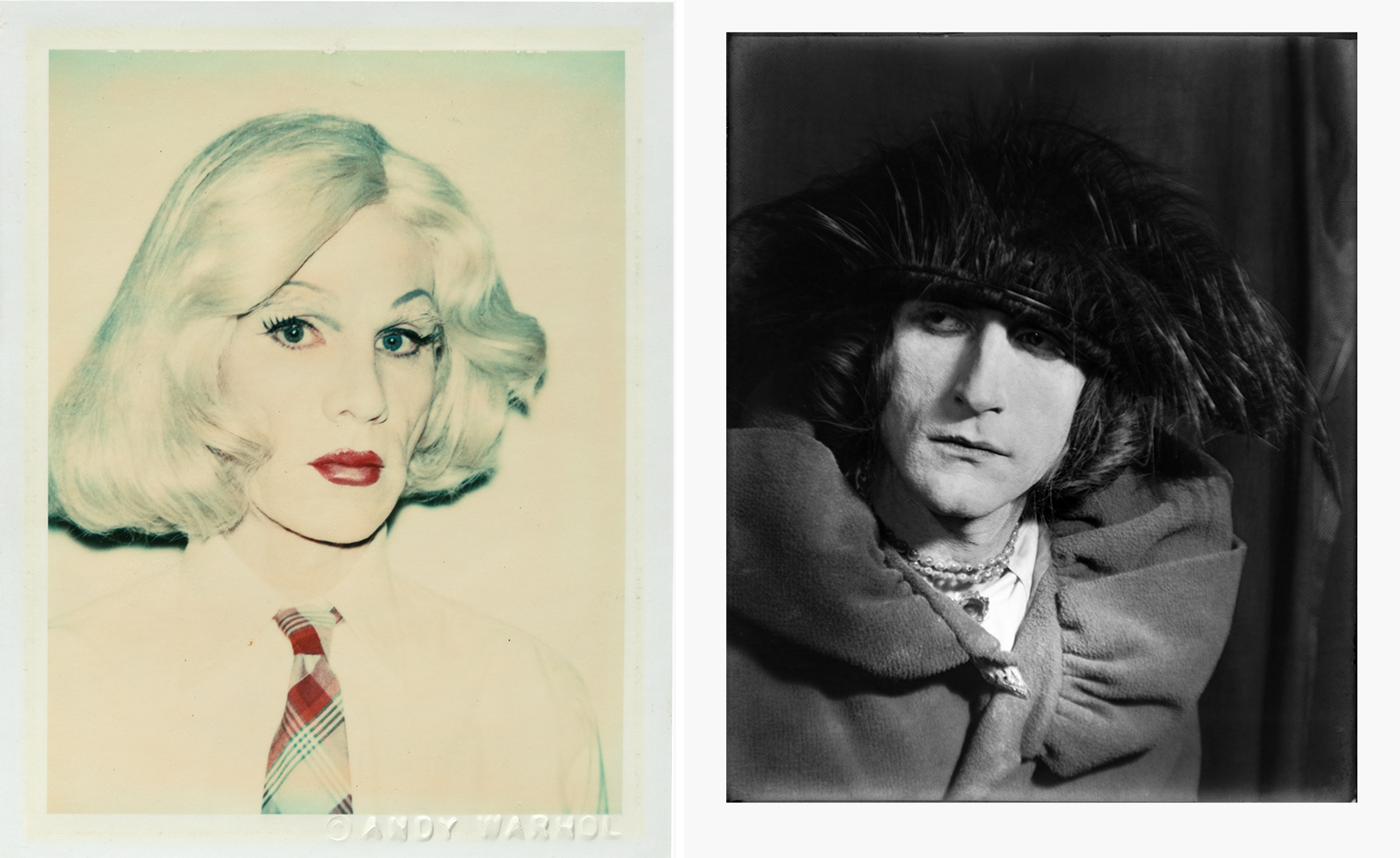 From Rembrandt to Warhol, a Paris exhibition asks: what do artists wear?
From Rembrandt to Warhol, a Paris exhibition asks: what do artists wear?‘The Art of Dressing – Dressing like an Artist’ at Musée du Louvre-Lens inspects the sartorial choices of artists
By Upasana Das
-
 Meet Lisbeth Sachs, the lesser known Swiss modernist architect
Meet Lisbeth Sachs, the lesser known Swiss modernist architectPioneering Lisbeth Sachs is the Swiss architect behind the inspiration for creative collective Annexe’s reimagining of the Swiss pavilion for the Venice Architecture Biennale 2025
By Adam Štěch
-
 A stripped-back elegance defines these timeless watch designs
A stripped-back elegance defines these timeless watch designsWatches from Cartier, Van Cleef & Arpels, Rolex and more speak to universal design codes
By Hannah Silver
-
 ‘Humour is foundational’: artist Ella Kruglyanskaya on painting as a ‘highly questionable’ pursuit
‘Humour is foundational’: artist Ella Kruglyanskaya on painting as a ‘highly questionable’ pursuitElla Kruglyanskaya’s exhibition, ‘Shadows’ at Thomas Dane Gallery, is the first in a series of three this year, with openings in Basel and New York to follow
By Hannah Silver
-
 The art of the textile label: how British mill-made cloth sold itself to Indian buyers
The art of the textile label: how British mill-made cloth sold itself to Indian buyersAn exhibition of Indo-British textile labels at the Museum of Art & Photography (MAP) in Bengaluru is a journey through colonial desire and the design of mass persuasion
By Aastha D
-
 Artist Qualeasha Wood explores the digital glitch to weave stories of the Black female experience
Artist Qualeasha Wood explores the digital glitch to weave stories of the Black female experienceIn ‘Malware’, her new London exhibition at Pippy Houldsworth Gallery, the American artist’s tapestries, tuftings and videos delve into the world of internet malfunction
By Hannah Silver
-
 Ed Atkins confronts death at Tate Britain
Ed Atkins confronts death at Tate BritainIn his new London exhibition, the artist prods at the limits of existence through digital and physical works, including a film starring Toby Jones
By Emily Steer
-
 Tom Wesselmann’s 'Up Close' and the anatomy of desire
Tom Wesselmann’s 'Up Close' and the anatomy of desireIn a new exhibition currently on show at Almine Rech in London, Tom Wesselmann challenges the limits of figurative painting
By Sam Moore
-
 A major Frida Kahlo exhibition is coming to the Tate Modern next year
A major Frida Kahlo exhibition is coming to the Tate Modern next yearTate’s 2026 programme includes 'Frida: The Making of an Icon', which will trace the professional and personal life of countercultural figurehead Frida Kahlo
By Anna Solomon
-
 A portrait of the artist: Sotheby’s puts Grayson Perry in the spotlight
A portrait of the artist: Sotheby’s puts Grayson Perry in the spotlightFor more than a decade, photographer Richard Ansett has made Grayson Perry his muse. Now Sotheby’s is staging a selling exhibition of their work
By Hannah Silver
-
 From counter-culture to Northern Soul, these photos chart an intimate history of working-class Britain
From counter-culture to Northern Soul, these photos chart an intimate history of working-class Britain‘After the End of History: British Working Class Photography 1989 – 2024’ is at Edinburgh gallery Stills
By Tianna Williams